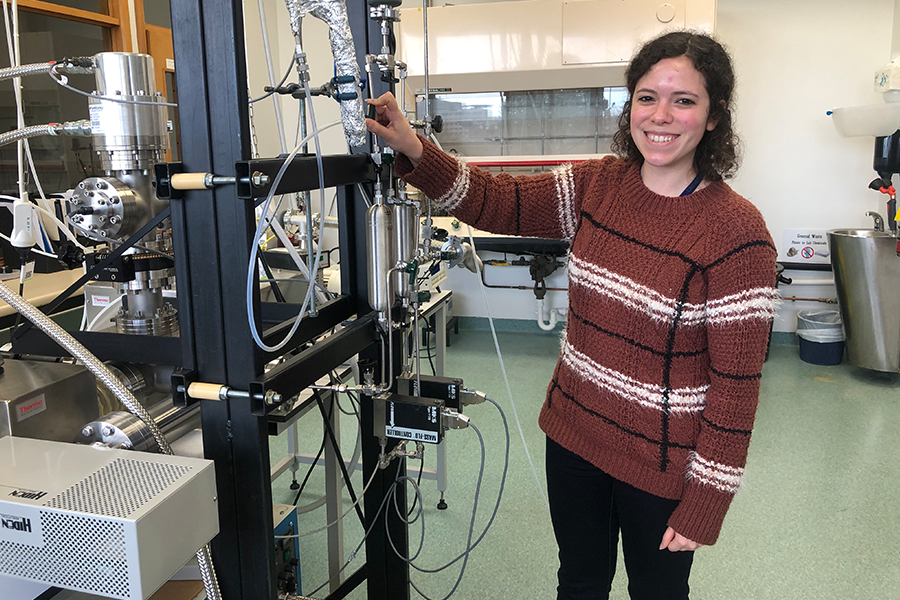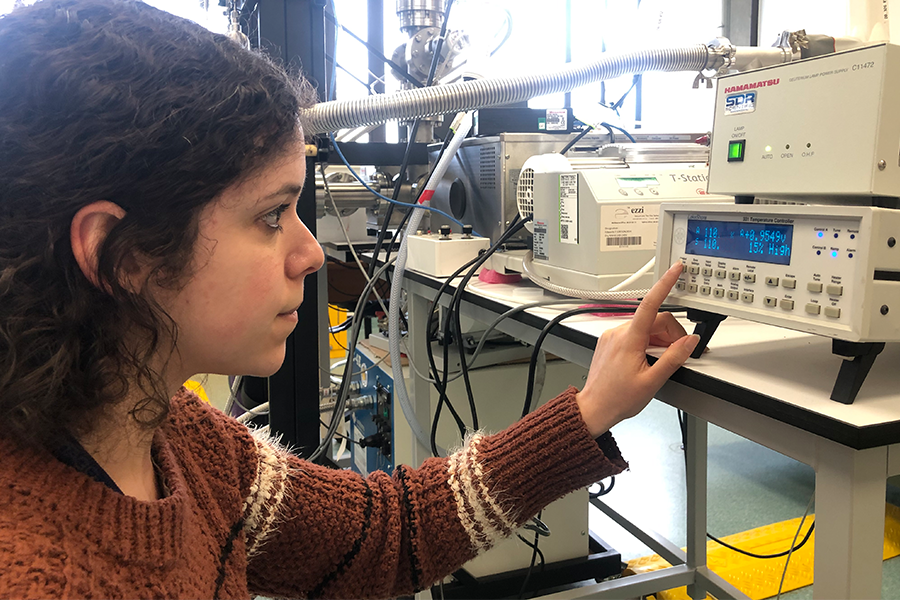
PhD candidate Larissa Lopes-Cavalcante using the University's Ennis Laboratory Planetary Ice Simulation Chamber.
An Otago PhD candidate is forming crystals possibly found on Titan – Saturn’s largest moon –to help NASA prepare for its future mission ‘Dragonfly’.
Larissa Lopes-Cavalcante, of the Department of Chemistry, is using the University’s Ennis Laboratory Planetary Ice Simulation Chamber to synthesise complex hydrocarbons that could be found in both the atmosphere and on the surface of Titan.
NASA’s spacecraft ‘Dragonfly’ will leave Earth for Titan in 2027. Cavalcante has been using the ice simulation chamber to make crystals that mimic those on Titan so NASA can better understand what kind of terrain ‘Dragonfly’ will land on, and also what it should search for upon arrival.
She says Titan’s atmosphere is full of hydrocarbons with a lot of radiation and energetic particles flowing through, making it a “very complex system”.
“Titan has been proposed as one of the early-Earth analogues in the solar system, so it’s really interesting from the sense that we can watch now what’s happening and correlate it to what has happened here earlier.”
There are different temperatures at different altitudes, meaning at some point the hydrocarbons condense forming small crystals, she says.
What makes these crystals interesting is they can form with different compositions and specific orientations between hydrocarbon molecules. Condensing different molecules within these crystals and irradiating them can form larger, more complex molecules, she says.
“We are looking for polycyclic aromatic hydrocarbons or nitrogen-containing polycyclic aromatic hydrocarbons that could be formed within the co-crystals.”

Cavalcante's work will help NASA with its future mission 'Dragonfly'.
While Cavalcante has no plans to visit outer space herself, she enjoyed meeting NASA astronaut Captain Heidemarie Stefanyshyn-Piper when she was on campus recently.
Captain Stefanyshyn-Piper’s career was interesting because she didn’t get to where she wanted to be straight away, but had to apply and then reapply to NASA multiple times before becoming an astronaut, Cavalcante says,
“She didn’t give up … it was quite inspiring.”
“In academia it’s very normal for you to be rejected in several different aspects and Heidemarie was showing that ‘okay, if you don’t give up, if you keep trying, you might get where you want to be’.”
Stefanyshyn-Piper visited Ōtepoti as part of her tour around Aotearoa New Zealand in September, and met with members of Aerospace South, of which Cavalcante is a part of. Aerospace South is a cluster of Space-Related Researchers and Enthusiasts coordinated by the University of Otago.
When she is not hard at work in the lab, Cavalcante has been helping with the planning of a symposium with Aerospace South which will be held early next year.
Cavalcante arrived at Otago from Brazil in 2022, saying the astrochemistry programme at Otago was “exactly what I was looking for”.
- Kōrero by internal communications adviser, Koren Allpress